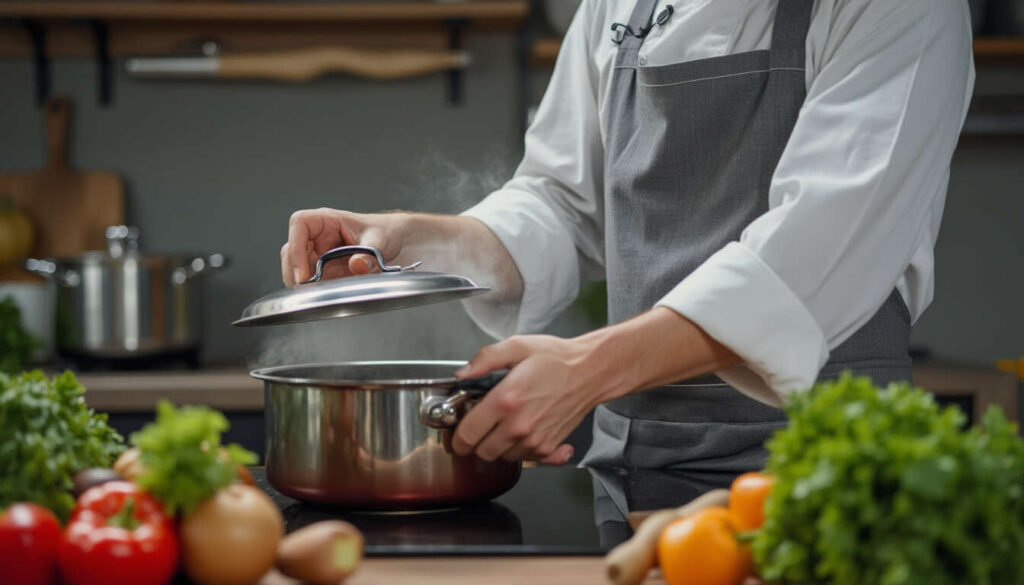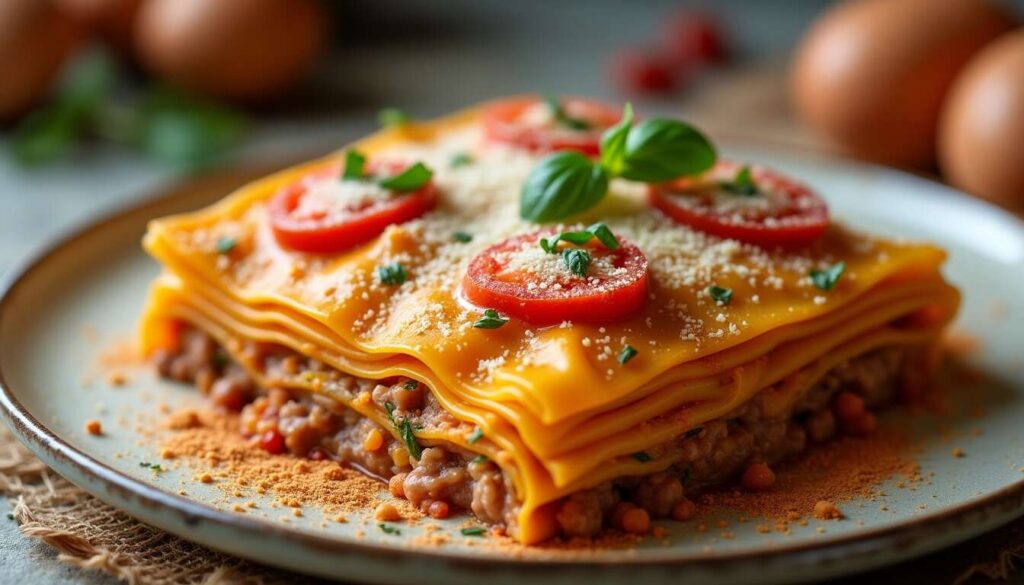In our ongoing quest for a healthy and flavorful cuisine, the method of cooking by steaming stands out as a culinary technique worth rediscovering. Revealing flavors and preserving essential nutrients, it increasingly attracts devotees. A true ode to gentle cooking, it harmonizes beautifully with modern trends focused on well-being and the nutritional quality of daily meals.
Understanding Cooking by Steaming
Definition of Cooking by Steaming
Cooking by steaming, far from being a recent technique, relies on a clever concept: slow-cooking foods at low temperatures within a sealed environment. This way, the ingredients cook in their own steam, intensifying flavors while minimizing the need for added fats. This method is optimal for a variety of food categories and suits both novices and seasoned chefs looking to elevate their culinary art.
Particularities of This Method
The central feature of cooking by steaming lies in the concentration of flavors and nutrients present in the foods. Cooks around the globe appreciate this technique for its ability to enhance even the simplest dishes. With no excess water or fats, this method emerges as a sensible alternative that respects dietary balance.
Armed with this understanding, we can explore the many benefits this technique offers to our daily diet.
The Benefits of This Culinary Technique
Preservation and Enhancement of Nutrients
Few things are as frustrating as cooking a vitamin-rich vegetable only to see its nutrients leach away in boiling water. With cooking by steaming, this issue is resolved: foods retain the bulk of their nutrients. This makes a significant difference, especially for those looking to maximize the nutritional intake of every meal.
An Explosion of Natural Flavors
By limiting evaporation and direct contact with water, this method preserves and concentrates the intrinsic aromas of foods. Imagine vegetables that retain all their natural taste, meats that are tender and juicy without extra fat – it creates a culinary experience that transforms an ordinary meal into a memorable feast.
Impact on Caloric Intake
An undeniable advantage of cooking by steaming is its role in reducing calories. Indeed, the absence of added fats significantly lowers the caloric content of dishes while maintaining optimal flavor, making this method ideal for dietary regimens.
Now, equipped with this knowledge, we can examine the essential equipment required to successfully employ this technique.
Essential Equipment for Cooking by Steaming
Essentials for Perfect Cooking
To cook by steaming, basic equipment is crucial: a steamer basket, a pot with a tight-fitting lid, or a dedicated steamer. Each of these utensils is designed to trap steam, ensuring even and flavorful cooking.
Characteristics of Effective Utensils
When purchasing your equipment, ensure that it is:
- Made from a material that conducts heat evenly, such as enameled cast iron.
- Equipped with a tightly sealing lid to trap moisture.
- Suitable for the portion sizes you plan to cook.
Every element plays a crucial role in ensuring that the nutritional and taste properties of the ingredients are preserved.
Now that you are equipped with your tools, it is worth comparing this method with a related technique: steaming.
Comparison Between Cooking by Steaming and Steaming
Fundamental Differences Between the Two Techniques
Although cooking by steaming and steaming share similarities, particularly their low fat requirements, they differ in their applications and outcomes. While steaming requires a constant supply of water as steam, cooking by steaming uses the natural moisture of the food itself, creating a sealed environment where flavors are trapped and concentrated.
Comparison of Nutritional Characteristics
Comparative table:
| Cooking by Steaming | Steaming | |
|---|---|---|
| Nutritional Value | High | Medium to High |
| Flavor | Intense and concentrated | Slightly diluted |
| Added Moisture | None | Required |
This comparison highlights the advantages of each and can help you choose the method that best suits your culinary needs.
Next, let’s discover which foods are best suited for this specific cooking technique.
Foods Suitable for Cooking by Steaming
The Best Candidates for Gentle Cooking
Cooking by steaming is ideal for a variety of foods. Among them, vegetables like broccoli, carrots, and zucchini, which retain their delicate texture and vital nutrients. White meats also benefit significantly from this method, as it keeps them tender and flavorful without drying out.
Examples of Culinary Applications
The versatility of this technique also shines with:
- Delicate fish such as salmon or cod
- Dried legumes requiring slow and gentle cooking
- Grains like rice, which gain flavor and fluffiness when cooked by steaming
These applications demonstrate the adaptability and effectiveness of cooking by steaming for various ingredient categories.
With these tips in mind, let’s move on to some advice to enhance your culinary skills.
Tips for Successfully Cooking by Steaming
Techniques to Enhance Your Preparations
A good cook understands the importance of meticulous preparation. For steaming, consider:
- Choosing your ingredients wisely
- Avoiding overcrowding the pot
- Maintaining a consistent moderate temperature
These steps ensure even cooking and impeccable flavor results.
How to Avoid Common Mistakes
Avoid lifting the lid too often. Excess curiosity is the enemy of cooking by steaming. Every peek interrupts the steam circulation, potentially prolonging cooking time and compromising the final result.
With these tips, you can approach the preparation of any dish with confidence and skill. Now, let’s explore how to manage the cooking order of vegetables to maximize these benefits.
Optimal Order of Vegetables for Perfect Cooking
Prioritizing Vegetables by Their Density
For uniform cooking, arrange vegetables according to their heat requirements. The denser ones, like potatoes or carrots, should go at the bottom, followed by the quick-cooking vegetables, such as zucchini or green beans.
A Harmonious Summit of Concentrated Flavors
Cooking different vegetables together in the same pot not only saves time but also enriches flavors, with each vegetable lending a fragment of its taste to the next. Respecting this order guarantees culinary success.
Now, let’s explore techniques for tenderizing meats using this method.
Tips for Tenderizing Meats with Steaming
Optimizing Meat Tenderness
Thanks to steaming, cuts known for being less tender can be elevated using the slow, moist cooking method. The muscle fibers relax, ensuring unmatched tenderness, even for typically tough cuts.
Techniques for Unparalleled Flavor
Incorporate aromatic marinades or fresh herbs from the start of cooking so that the meats absorb all this richness from the first moments. You achieve a dish that balances delicacy and strong flavor.
This culinary exploration shows how cooking by steaming can elevate a simple meal into a gastronomic masterpiece.
Having re-emerged in the culinary spotlight, cooking by steaming holds untapped potential. Combining nutrient preservation and flavor enhancement, it meets modern demands for health and taste. With the right equipment and a few savvy tips, anyone can now immerse themselves in this cooking art, enriching their daily life and preparing dishes that are both healthy and memorable.







